I thought, I had lost half a soul here
With works by Tamina Amadyar, Hangama Amiri, Horst Antes, Katinka Bock, Miriam Cahn, Eva Koťátková, Jeewi Lee, Paulo Nazareth, Salvo, Michael Schmidt, Mike Silva, Feier Yu, Meng Zhang
17 JAN until 22 FEB 2025
Opening – 16 JAN 2025, 6-9 pm
The group exhibition I thought, I had lost half a soul here delves into the many possible interpretations of “home”, as well as, crucially, the absence of such a sanctuary. Through the distinct perspectives of twelve artists, the paintings, drawings, photographs, textile works and sculptures explore themes of belonging, refuge, shelter, displacement and coexistence.
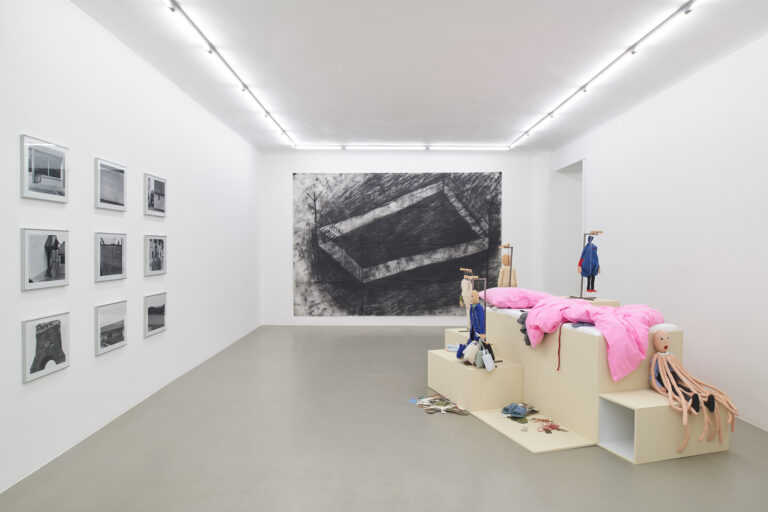
Installation view
Photo: Oliver Roura
Courtesy the artist and Meyer Riegger
The title of the exhibition itself is drawn from the poem Aachen (2016) by Meng Zhang (1983, Tianjin, China), who studied literature before turning to the visual arts. Her poetic drawings and prints often resemble maps or branching paths, reflecting her navigation between both Western and Chinese art traditions and ways of life. The marks of charcoal and wax on the delicate transparent paper that Zhang uses in At Nowhere No.1 (Nirgendwo) (2020), for the artist, conjure a feeling of being lost physically, geographically and culturally, but also the simultaneous desire to find one’s place.
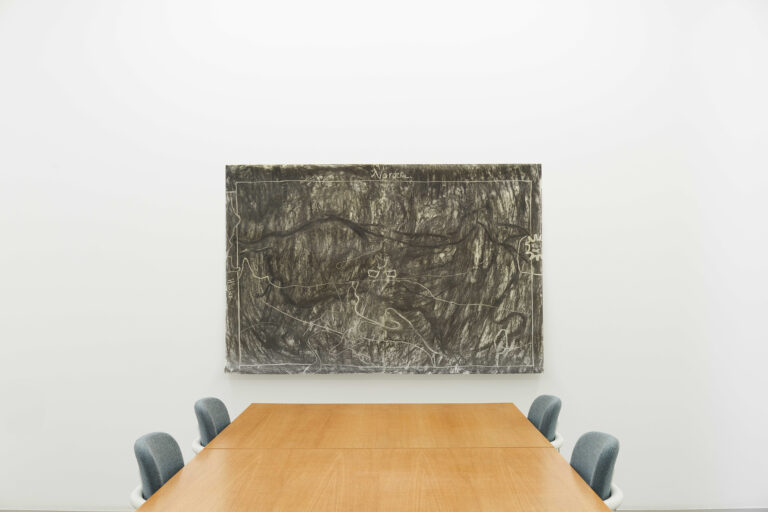
Meng Zhang
At Nowhere No.1 (Nirgendwo), 2020
charcoal, wax on transparent paper
120 x 180 cm
Photo: Oliver Roura
Courtesy the artist and Meyer Riegger
The fabric work buji (2024) by Tamina Amadyar (1989, Kabul, Afghanistan) is created from discarded remnants of already painted canvas. These sacks, which Amayar sews, evoke the image of bags of rice on market stalls. Cooking and reimagining Afghan dishes – frequently accompanied by rice – connects Amadyar to her roots. buji forms part of a broader series of works in which the artist draws upon the intimacy, softness and warmth of fabrics, including domestic textiles, such as mattresses, blankets and cushions.
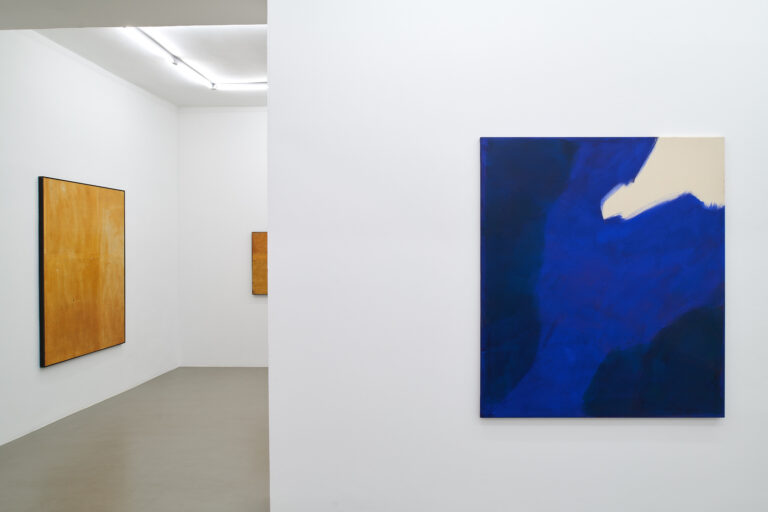
Right:
Tamina Amadyar
harvest moon, 2024
pigment and glutin on canvas
150 x 130 cm
Photo: Oliver Roura
Courtesy the artist and Meyer Riegger
Domestic textiles are also a feature of the installation What if… (2022/25), created in collaboration between Eva Koťátková (1982, Prague, Czech Republic) and her mother Dana Koťátková (1956, Prague, Czechoslovaikia). The piece references the ongoing practice of the artist working together with her mother, who helps her cut, stitch and sew objects for her installations – an activity that frequently takes place in the elder Koťátková’s bedroom. The installation reflects ongoing conversations between the two Koťátkovás in this intimate setting about the mother’s experiences of growing up in their hometown during the communist regime.
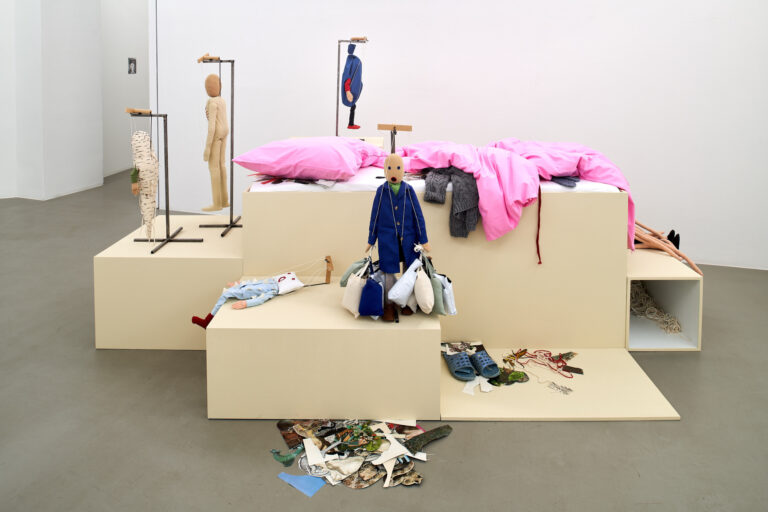
Eva & Dana Koťátková
What if…, 2022/25
wood, metal, fabric, shoes, clothes, paper
approx. 175 x 330 x 220 cm
Courtesy the artist and Meyer Riegger
Photo: Oliver Roura
The idea of a bed standing for warmth and well-being is, however, upended by the jagged charcoal strokes of Miriam Cahn’s (1949, Basel, Switzerland) k-bett (1982). The harsh lines and muted colours of Cahn’s drawing of a hospital bed can be seen to express that the feeling an object inspires alters depending on the context and circumstances in which one finds oneself. While a bed at home may represent tranquillity and security, not all are lucky enough to have access to such a place, whether as a result of illness, domestic violence, homelessness, or displacement due to political or climatic reasons.
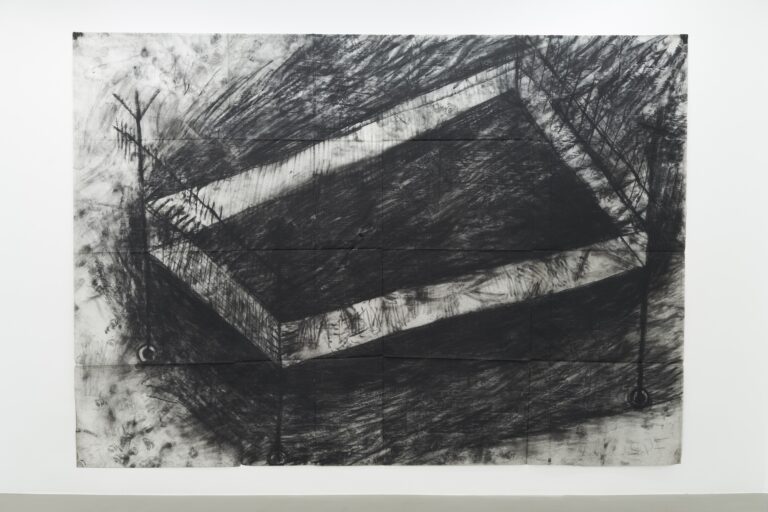
Miriam Cahn
k-bett, 1982
coal on parchment
285 x 400 cm
Photo: Oliver Roura
Courtesy the artist and Meyer Riegger
Early in his career, Michael Schmidt (1945–2014, Berlin, Germany) worked as a freelance photographer for Berlin’s senate and district offices, capturing the city’s social and architectural fabric. Schmidt’s Berlin Wedding series (1977/78) depicts daily life and domesticity in the west of the capital during the late seventies, in a somewhat clinical, documentary style. His later work Irgendwo (2001–04), instead, presents rather bleak images of life in the provinces of a reunited Germany. The starkly posed and formal nature of Schmidt’s photographs gives them an ambiguity that can be seen to question whether home is always a place of cosiness and comfort.
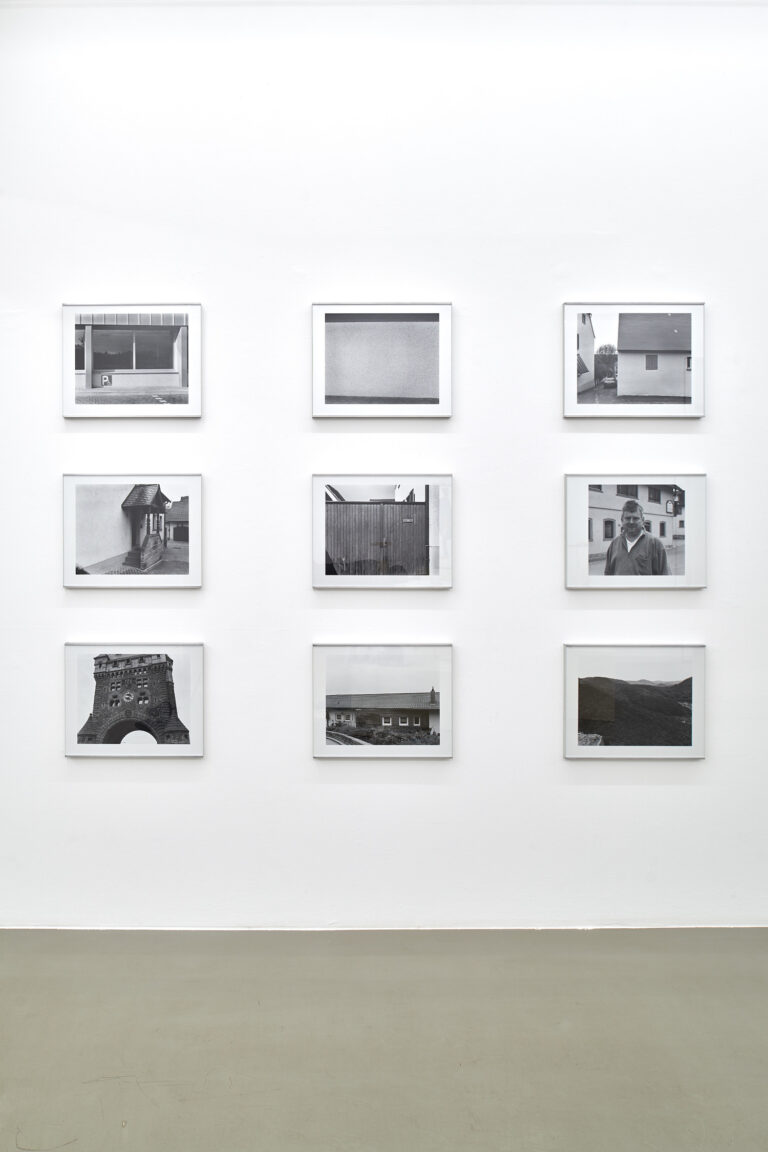
Michael Schmidt
Irgendwo, 2001-2004
gelatin silver bromide print toned gold framed by the artist
group of 9 photographs
32,3 x 40,7 cm each
40,4 x 49,7 cm each, framed
Photo: Oliver Roura
Courtesy: The Estate of Michael Schmidt and Galerie Nordenhake Berlin/Stockholm
Conversely, Mike Silva’s (1970, Sandviken, Sweden) painting Bedroom Interior (2024) is filled with warmth and tenderness. Light and shadow take centre stage in his paintings, which revive memories of past chapters. Based on his archive of photographs of London in the 1990s and early 2000s, Silva’s tranquil, wistful works are snapshots of moments frozen in time – locations that were once home for him, his friends or lovers.
Jeewi Lee (1987, Seoul, Korea) addresses traces of daily life in her installations, images and videos. For her Past Tense series, Lee uses old Hanji paper, traditionally laid as flooring in Korean houses. Handmade from the bark of the paper mulberry tree, Hanji bears traces of history, people and place – matchstick burns, tea stains or ironing marks reflect Korea’s floor-sitting culture. Underfloor heating creates further gradients, transforming these coverings into abstract landscapes and images of the past.
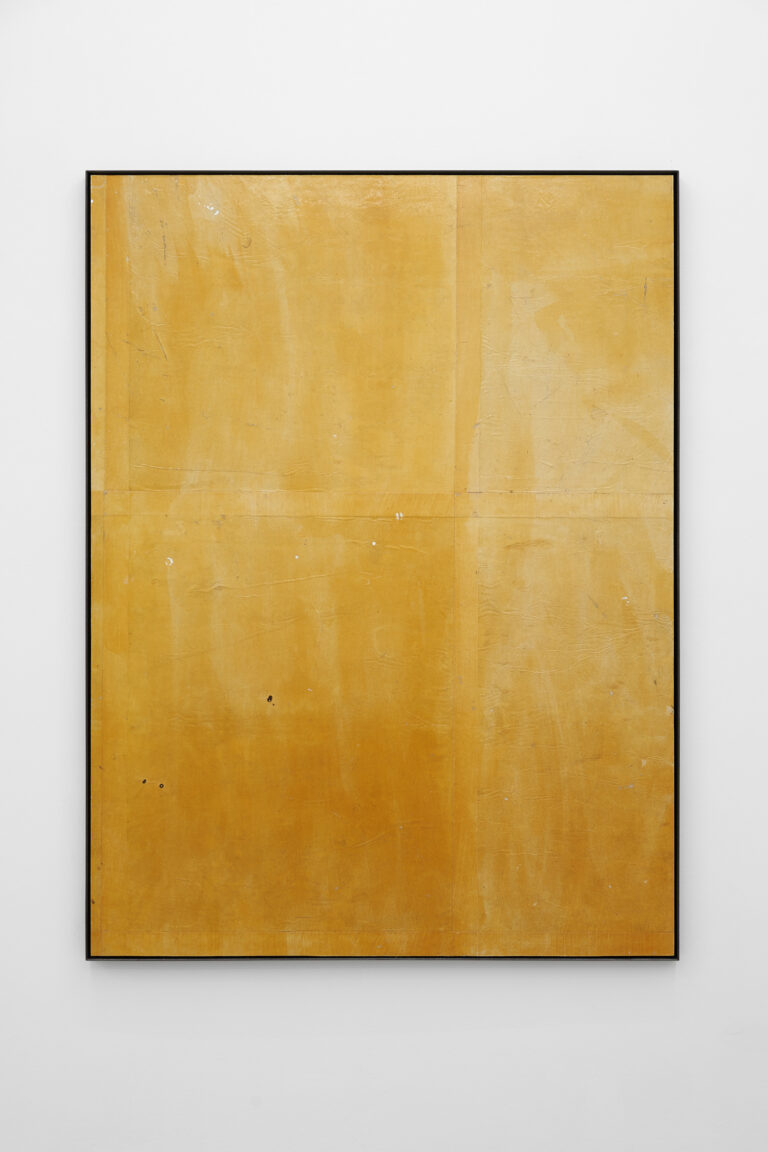
Jeewi Lee
Past Tense_30, 2025
Hanji Jangpan mounted on wood
164 x 123 cm framed
Photo: Oliver Roura
Courtesy the artist and Meyer Riegger
Likewise, the sculptures and installations of Katinka Bock (1976, Frankfurt am Main, Germany) also address the relationship between people, the objects they use and the spaces they inhabit. Her pieces often create subtle shifts in perception, altering architecture, objects and surroundings, more-or-less overtly, in ways that influence how we behave, consciously or otherwise. In her work Wesen (2024), an old cast-iron radiator is upended, becoming the base for a glazed, green ceramic.
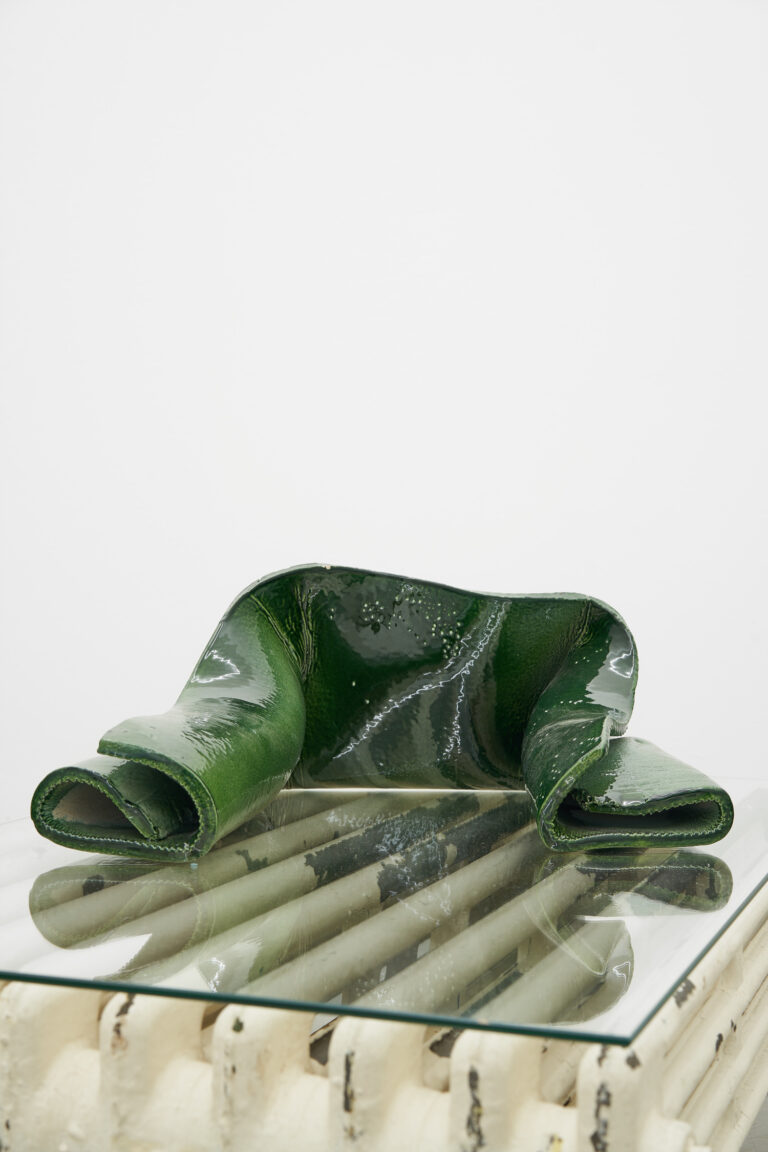
Katinka Bock
Wesen, 2024
glazed ceramic, glass, cast iron radiator, steel
43 x 63 x 87 cm
Photo: Oliver Roura
The capacity for domestic furniture to act as a conveyor of meaning is further present in Feier Yu’s (1995, Hangzhou, China) painterly installation Ripples (2024). The work features an antique board game table, traditionally used for the East Asian game “Go” – an object that would have been found in many Chinese, Japanese or Korean houses in earlier times. Two sides of the board depict ginseng liqueur, a widely consumed drink in China and Korea. The pairing of the table and the liqueur exemplifies how not only objects, but also what we eat and drink, can become powerful embodiments of our cultural and geographical roots.
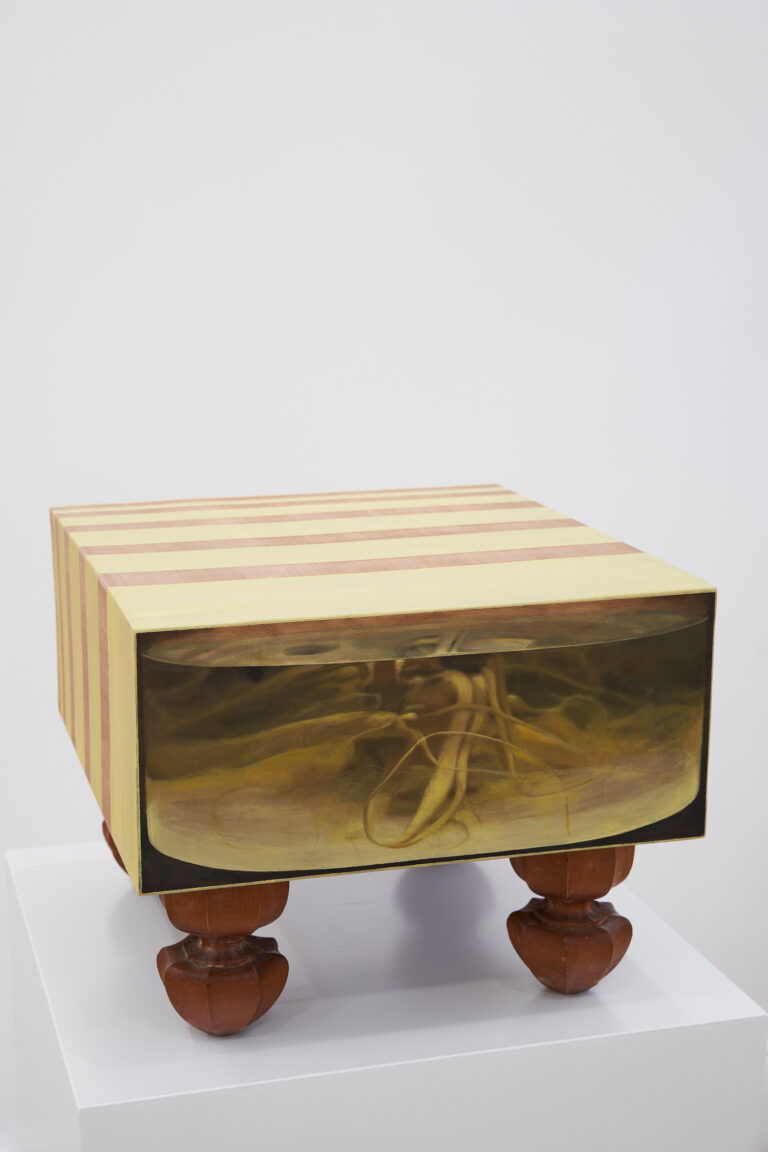
Feier Yu
Ripples, 2024
antique chessboard, oil paint, mixed media.
36,2 x 32 x 25,4 cm
Photo: Oliver Roura
Courtesy of the artist and Meyer Riegger
Hangama Amiri’s (1989, Peshawar, Pakistan) textile collage Sahar, Nail Salon and Eyelash Extensions #3 (2020) resembles an advertisement for a beauty parlour. Since fleeing Taliban-controlled Kabul at the age of seven, home for Amiri has been less tied to a tangible reality than to emotions and recollections, which she weaves into her work alongside experiences of diaspora. Under the Taliban, women are rendered largely invisible and silent in Afghanistan’s public spaces. Through these works, Amiri seeks to offer a sense of time and place, while simultaneously highlighting the current political situation.
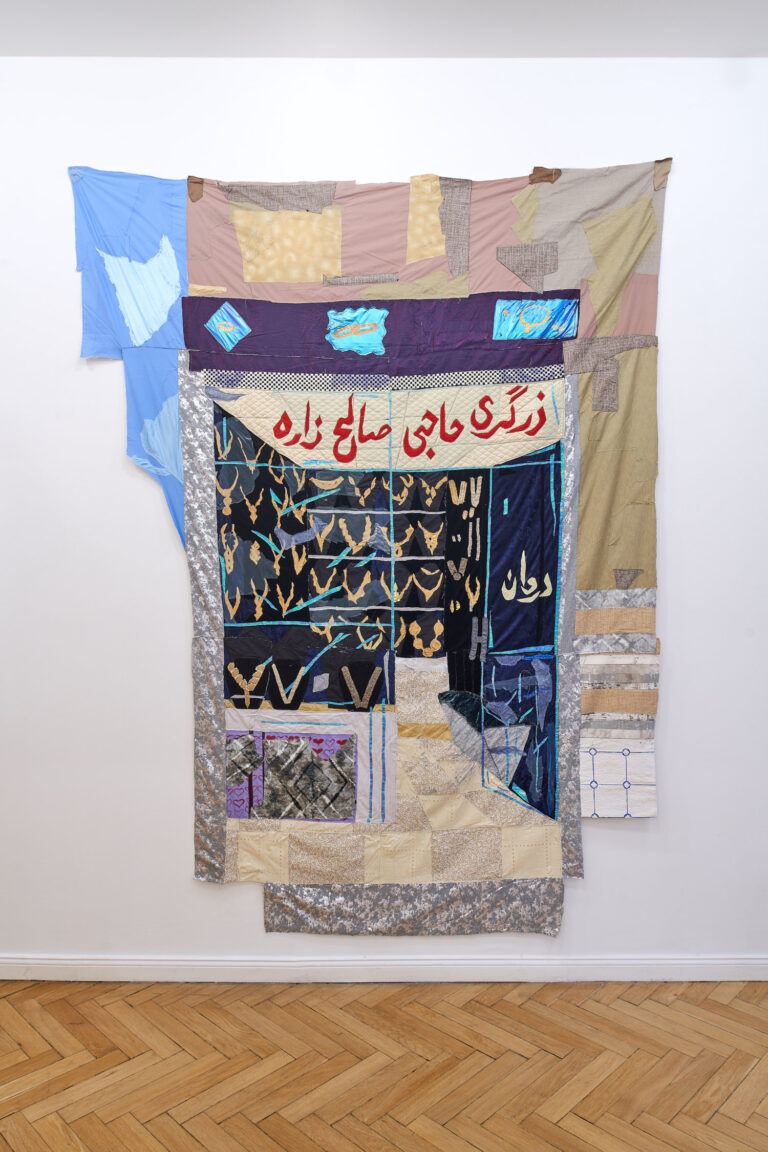
Hangama Amiri
Haji Saleh Zadah, Goldsmith, 2020
cotton, chiffon, muslin, silk, velvet, table cloth, linen, wallpaper inkjet prints on paper, iridescent paper, marker, polyester, beads, plastic, acrylic paint, suede, and found fabrics
307 × 236 cm
Notions of forced displacement and issues of state oppression are an intrinsic element of the work of Paulo Nazareth (1977, Governador Valadares, Brazil) too. Nazareth’s practice spans video, painting, photography and sculptures, which he creates on the move, but his most potent medium lies in the relationships he forms with the people he meets during his nomadic journeys. In his 2015 work Pueblos originarios de Sudamérica, Nazareth calls attention to indigenous groups in South America, who have so often been victims of displacement and oppression during the lasting legacy of European colonialism.
Salvatore Mangione, known as Salvo (1947, Sicily, Italy–2015 Turin, Italy), spent his childhood in Sicily before moving to Turin at the age of nine. The landscape Senza titolo (1991) depicts a palm bathed in the warm light of sunset alongside a minaret. Salvo found inspiration for his works during travels to Southern Europe, North Africa and Asia. Salvo’s dreamy landscape paintings – which are composites of simplified and idealised architectural and landscape elements – can be seen as idylls of his Mediterranean birthplace, a region with a rich history of cultural exchange and coexistence.
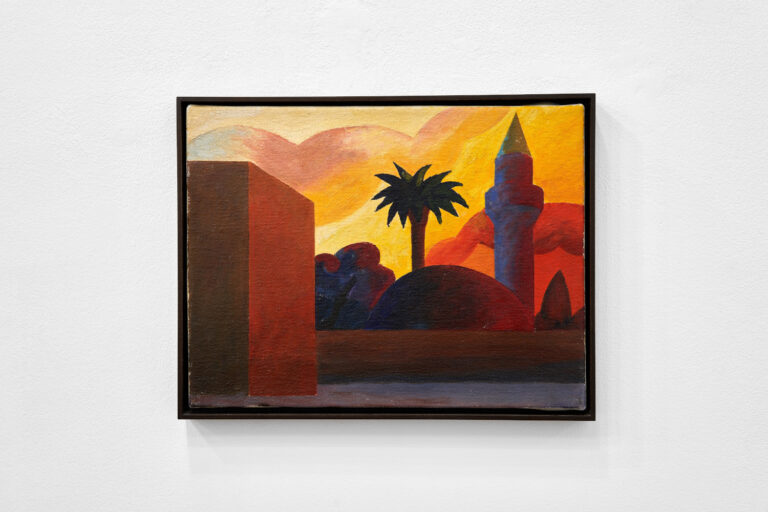
Salvo
Senza titolo, 1991
oil on canvas
20 x 40 cm
Photo: Oliver Roura
Private collection, Berlin
Horst Antes’s (1936, Heppenheim, Germany) house paintings also feature images of buildings stripped back to their simplest forms. They recall case coloniche, traditional Italian farmhouses – a daily sight for Antes, who has lived in a small valley in Italy since the mid1990s. Having turned his back on portraying the human figure following the outbreak of the Falklands War, Antes took to painting dwellings. Devoid of windows and doors, Antes’s houses seem almost impenetrable, like sacred temples. As with his earlier “Kopffüßler” figures, they are abstract symbols of themselves – monumental, timeless archetypes of one of the simplest yet most powerful human desires: home.
